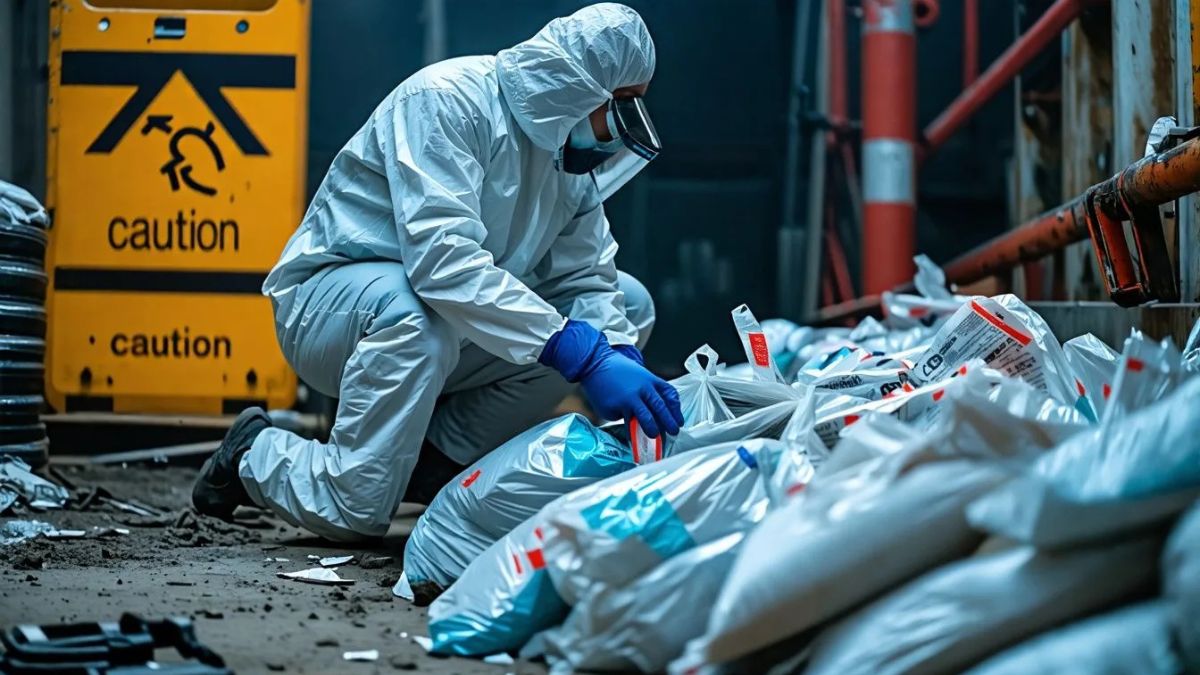What is Asbestlint?
Asbestlint is a misnomer that people easily confuse with asbestos lint, which is used to describe fibrous dust or residues that are produced from disturbing, degrading, or working with asbestos-containing materials (ACMs). Upon inhalation, such thin fibers pose extreme risks to health, and for this reason, the significance of knowing their source, structure, and hazards increases. Asbestlint is found in insulation, fire-resistant products, tiles, cement, and textiles and remains in legacy buildings, old infrastructure, and industrial equipment.
Origins and History of Asbestlint
Asbestlint usually results as asbestos-containing products age and degrade. Renovation, vibration, wear, or careless handling may dislodge these materials to cause small fibers to become airborne, which fall on surfaces and in the air as “lint,” an easy source of disturbance pollution in older structures.
Health Risks of Asbestlint Exposure
Why Asbestlint is a Hazard
Asbestlint is dangerous as it emits airborne asbestos fibers, which are invisible to the naked eye. Upon inhalation, these fibers have a tendency to settle in the lungs and lead to long-term damage. Long-term or repetitive exposure can easily result in asbestos diseases, which include:
Mesothelioma – A serious form of cancer that occurs in the lining of the lungs or abdomen.
Asbestosis – Chronic lung illness due to scarring of lung tissue.
Lung Cancer – Usually developing years after exposure.
Pleural Thickening – Producing chest pain and breathlessness.
These illnesses are usually irreversible and fatal, with 10 to 50 year latency periods. Asbestos exposure is never safe, so prompt and professional remediation must be done if asbestlint is suspected.
Where Asbestlint Can Be Found
Common Locations in Residential and Commercial Buildings
Attics and Crawlspace – Especially where there is older insulation material.
- Boiler Rooms and Plumbing Systems – Asbestos-covered pipes.
- Ceiling Tiles and Panels – Frequently installed in buildings prior to 1980.
- Flooring and Vinyl Tiles – Asbestos was frequently mixed into flooring adhesives.
- Wall Plasters and Cement Products – These may emit fine particles with asbestos.
Asbestlint is prone to settling in inaccessible areas, inside walls, drop ceilings, or heating, ventilation, and air-conditioning systems, where it may disseminate undetected by air currents.
Identification of Asbestlint
Visual and Professional Identification
Asbestos fibers are not visually detectable, but certain indications may reveal that they are present:
Aged or deteriorated insulation.
White, gray, or brown fibrous material surrounding ducts or pipes.
Dusty material in older buildings, especially vents.
But to correctly identify asbestlint, there needs to be qualified asbestos analysis. Specialists obtain sample materials or air and examine them with polarized light microscopy (PLM) or transmission electron microscopy (TEM). The tests verify the existence and amount of asbestos fibers.
How to Properly Handle and Remove Asbestlint
Qualified Remediation is Mandatory
Never try removal or cleaning of asbestlint yourself. Misuse can worsen contamination and increase exposure. Instead, use these best practices:
Call Certified Asbestos Removal Experts
Asbestos-containing material should be examined and removed by trained, qualified professionals only. They employ HEPA-filtered vacuum, complete PPE (Personal Protective Equipment), negative pressure equipment, and decontamination protocols.
Contain the Contaminated Area
Seal the area with plastic sheeting and negative pressure units to avoid fiber dispersal.
Perform Air Monitoring
Constant air monitoring avoids the dispersal of fibers to clean spaces.
Carry Out Thorough Decontamination
Specialist crews decontaminate surfaces, air ducts, and personal gear before departing the site.
Release Waste Properly
Waste asbestos is put in leak-proof containers and taken to licensed hazardous waste disposal facilities pursuant to environmental regulations.
Regulations and Legal Requirements
Compliance and Safety Laws Understanding
All nations, including the U.S., UK, Canada, and Australia, have stringent laws regarding asbestos. Employers, property owners, and contractors are required to comply with:
- Occupational Safety and Health Administration (OSHA) codes.
- Environmental Protection Agency (EPA) asbestos laws.
- Control of Asbestos Regulations (UK).
- Safe Work Australia asbestos standards.
Non-compliance will lead to fines, liability, and criminal prosecution. Property managers should have an asbestos management plan and inspect regularly in known or suspected areas.
Prevention and Best Practices for Asbestlint Safety
Mitigation and Maintenance Tips
- Perform Regular Inspections – Particularly in buildings constructed prior to 1980.
- Leave Suspected Materials Alone – Do not touch suspected ACMs.
- Mark Asbestos Areas Clearly – Avoid accidental exposure when making repairs.
- Train Maintenance Staff – Make sure they understand how to recognize and steer clear of.
Replace Asbestos Products – Where possible, replace with newer substitutes.
Newer Alternatives for Asbestos Materials
Because of the recognized risks of asbestos, the market has changed toward safer, nontoxic substitutes like:
- Fiberglass insulation
- Cellulose fibers
- Thermoset plastics
- Polyurethane foam
- Amorphous silica fabrics
These substitutes have the same retardation against fire and insulate without causing health effects, and they are the best option for any construction or repair endeavor.
Final Thoughts:
Asbestlint risk has been underappreciated, particularly in aged structures where maintenance or deterioration can release poisonous fibers into the air. Their identification, separation, and professional destruction are not only legal obligations—it is an act of saving lives.
